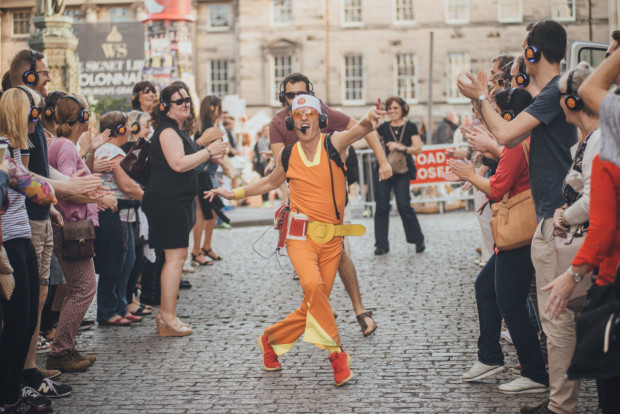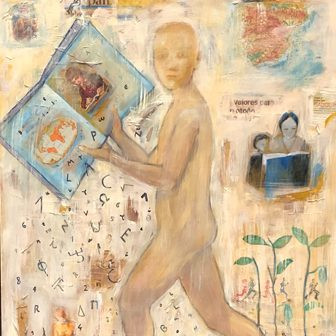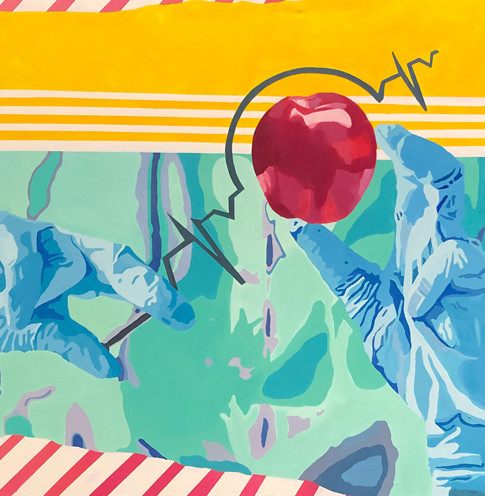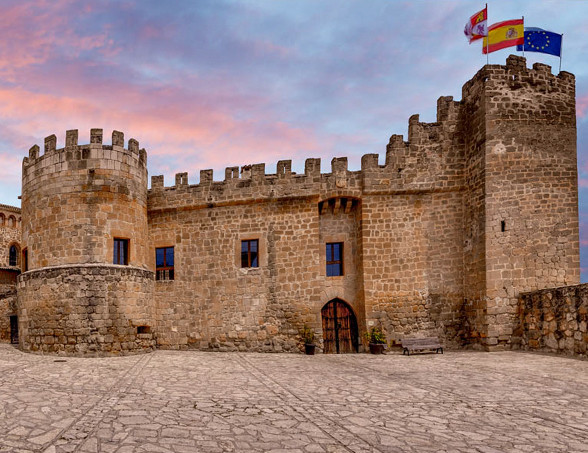Are you curious about Arts Tourism Examples and how they can enhance your travel experiences in Vietnam? SIXT.VN is here to guide you through the world of arts tourism, providing seamless travel solutions including airport transfers, hotel bookings, and curated tours. Discover Vietnam’s rich cultural heritage and vibrant artistic scene with our expert services, ensuring a memorable and enriching journey.
1. What Exactly is Arts Tourism and Why Should You Care?
Arts tourism is a form of travel that focuses on experiencing artistic and cultural activities, often in historical or tourist settings. It’s more than just visiting museums; it’s about immersing yourself in the local culture and engaging with art in a meaningful way. According to a 2019 report by the United Nations World Tourism Organization (UNWTO), cultural tourism, including arts tourism, accounts for approximately 40% of global tourism.
1.1. Why is Arts Tourism Important?
Arts tourism is significant because it:
- Preserves Cultural Heritage: Supports the conservation and restoration of historical sites and cultural spaces.
- Boosts Local Economies: Attracts tourists to smaller towns and villages, creating jobs and fostering economic development.
- Offers Unique Experiences: Provides travelers with enriching and authentic experiences beyond typical tourist attractions.
- Promotes Cultural Exchange: Encourages interaction between visitors and local communities, fostering understanding and appreciation.
1.2. How Does SIXT.VN Support Arts Tourism?
SIXT.VN enhances your arts tourism experience by providing:
- Convenient Airport Transfers: Ensuring a smooth and stress-free arrival and departure.
- Curated Hotel Bookings: Offering accommodations near key cultural sites and artistic hubs.
- Expertly Guided Tours: Providing insightful tours that delve into Vietnam’s artistic and historical treasures.
- Seamless Travel Solutions: Making your travel arrangements hassle-free, so you can focus on enjoying the art and culture.
2. What Are Some Key Components of Arts Tourism?
Arts tourism encompasses a variety of activities and experiences, including:
- Visiting Museums and Art Galleries: Exploring collections of historical artifacts, contemporary art, and traditional crafts.
- Attending Performing Arts Events: Enjoying theater performances, music concerts, dance recitals, and traditional ceremonies.
- Exploring Historical Sites: Discovering the artistic and architectural significance of landmarks, temples, and ancient cities.
- Participating in Cultural Festivals: Engaging in local celebrations, parades, and artistic performances that showcase the region’s cultural identity.
- Engaging with Local Artists: Visiting artists’ studios, attending workshops, and purchasing unique artworks directly from creators.
2.1. What Role Do Museums Play in Arts Tourism?
Museums are cornerstones of arts tourism, offering visitors a curated glimpse into a region’s history, art, and culture. According to the International Council of Museums (ICOM), museums play a crucial role in preserving and interpreting cultural heritage for present and future generations.
2.2. How Can Attending Performing Arts Events Enhance Your Travel Experience?
Attending performing arts events allows you to immerse yourself in the local culture and experience the vibrancy of artistic expression. Whether it’s a traditional water puppet show in Hanoi or a contemporary dance performance in Ho Chi Minh City, these events offer unique insights into Vietnam’s artistic landscape.
2.3. Why Should You Explore Historical Sites as Part of Your Arts Tourism Journey?
Exploring historical sites provides a tangible connection to the past, allowing you to appreciate the artistic and architectural achievements of previous generations. From the ancient city of Hue to the historic streets of Hoi An, Vietnam’s historical sites are treasure troves of cultural and artistic significance.
3. Where Can You Find Arts Tourism Examples in Vietnam?
Vietnam offers a wealth of arts tourism opportunities, from bustling cities to serene countryside locations.
3.1. Hanoi: A Hub for Traditional Arts
Hanoi, the capital of Vietnam, is renowned for its traditional arts and crafts. Key attractions include:
- Vietnam National Museum of Fine Arts: Showcasing a comprehensive collection of Vietnamese art from ancient times to the present day.
- Thang Long Imperial Citadel: A UNESCO World Heritage Site offering insights into Vietnam’s imperial history and architecture.
- Water Puppet Theaters: Experiencing the unique art form of water puppetry, a traditional Vietnamese performance.
- Old Quarter: Exploring the historic streets lined with traditional craft shops, art galleries, and cultural landmarks.
According to the Vietnam National Administration of Tourism, Hanoi welcomed over 7 million international tourists in 2019, many of whom were drawn to the city’s rich cultural heritage and artistic attractions.
3.2. Hoi An: A Living Museum of Architecture
Hoi An, a UNESCO World Heritage Site, is a well-preserved trading port that showcases a unique blend of Vietnamese, Chinese, and Japanese architectural styles. Key attractions include:
- Japanese Covered Bridge: A historic landmark symbolizing the cultural exchange between Vietnam and Japan.
- Ancient Houses: Exploring traditional merchant houses that offer insights into Hoi An’s rich trading history.
- Hoi An Museum: Showcasing artifacts and exhibits that detail the town’s cultural heritage.
- Tailoring Shops: Experiencing the art of tailoring, a traditional craft that has been practiced in Hoi An for centuries.

3.3. Hue: An Imperial City of Art and Culture
Hue, the former imperial capital of Vietnam, is home to a wealth of historical sites and cultural landmarks. Key attractions include:
- Imperial Citadel: A UNESCO World Heritage Site that showcases the grandeur of the Nguyen Dynasty.
- Tombs of the Emperors: Exploring the elaborate tombs of former emperors, each reflecting unique architectural styles and artistic details.
- Thien Mu Pagoda: A historic Buddhist temple perched on a hill overlooking the Perfume River, offering stunning views and cultural insights.
- Hue Royal Fine Arts Museum: Displaying a collection of royal artifacts and artworks from the Nguyen Dynasty.
3.4. Ho Chi Minh City: A Center for Contemporary Art
Ho Chi Minh City, Vietnam’s largest city, is a vibrant hub for contemporary art and culture. Key attractions include:
- Fine Arts Museum: Showcasing a collection of Vietnamese and international art, with a focus on modern and contemporary works.
- War Remnants Museum: Providing a poignant look at the Vietnam War through photographs, artifacts, and exhibits.
- Street Art Scene: Exploring the city’s vibrant street art scene, with murals and graffiti art adorning buildings and alleyways.
- Independent Art Galleries: Visiting independent art galleries that showcase the works of emerging Vietnamese artists.
According to a report by Grant Thornton Vietnam, Ho Chi Minh City’s tourism sector has seen significant growth in recent years, driven by the city’s diverse cultural attractions and vibrant arts scene.
4. How Can You Plan an Arts Tourism Trip to Vietnam?
Planning an arts tourism trip to Vietnam requires careful consideration of your interests, budget, and time constraints. Here’s a step-by-step guide to help you plan your trip:
- Define Your Interests: Determine what aspects of Vietnamese art and culture you want to explore, such as traditional music, visual arts, architecture, or culinary traditions.
- Set a Budget: Determine how much you are willing to spend on your trip, including transportation, accommodation, food, and activities.
- Choose Your Destinations: Select the cities and regions you want to visit based on your interests and budget.
- Book Your Flights and Accommodation: Book your flights and accommodation in advance to secure the best deals and ensure availability.
- Plan Your Itinerary: Create a detailed itinerary that includes the attractions you want to visit, the activities you want to participate in, and the transportation options you will use.
- Consider Guided Tours: Enhance your experience with guided tours led by knowledgeable locals who can provide insights into Vietnam’s art and culture.
- Learn Basic Vietnamese Phrases: Learning a few basic Vietnamese phrases can enhance your interactions with locals and enrich your travel experience.
4.1. What Are the Best Times to Visit Vietnam for Arts Tourism?
The best times to visit Vietnam for arts tourism depend on the region you plan to visit. Generally, the dry season (November to April) is the most favorable time to visit most parts of the country, as the weather is pleasant and ideal for outdoor activities.
4.2. What Should You Pack for an Arts Tourism Trip to Vietnam?
When packing for an arts tourism trip to Vietnam, consider the following:
- Comfortable Clothing: Pack lightweight and breathable clothing suitable for warm and humid weather.
- Comfortable Shoes: Bring comfortable walking shoes for exploring historical sites and museums.
- Sunscreen and Insect Repellent: Protect yourself from the sun and mosquitoes.
- Rain Gear: Pack a raincoat or umbrella, especially if you are traveling during the rainy season.
- Camera: Capture your artistic experiences with a good-quality camera.
- Adapter: Bring a power adapter if your electronic devices use a different plug type.
4.3. How Can SIXT.VN Help You Plan Your Arts Tourism Trip?
SIXT.VN offers a range of services to help you plan your arts tourism trip to Vietnam, including:
- Customized Itineraries: Creating personalized itineraries tailored to your interests and budget.
- Airport Transfers: Providing seamless airport transfers to and from your hotel.
- Hotel Bookings: Offering a wide selection of hotels in various locations, catering to different budgets and preferences.
- Guided Tours: Arranging guided tours of historical sites, museums, and art galleries.
- Transportation Services: Providing reliable transportation options, including car rentals and private drivers.
5. Can Arts Tourism Promote Sustainable Travel?
Arts tourism can play a significant role in promoting sustainable travel by:
- Supporting Local Communities: Arts tourism encourages visitors to engage with local communities, supporting their economies and preserving their cultural heritage.
- Preserving Cultural Heritage: By attracting tourists to historical sites and cultural landmarks, arts tourism helps fund their preservation and restoration.
- Promoting Responsible Tourism Practices: Arts tourism encourages travelers to respect local customs and traditions, minimizing their impact on the environment and local communities.
- Educating Travelers: Arts tourism provides opportunities for travelers to learn about the local culture and environment, fostering a greater appreciation for sustainable travel practices.
5.1. How Can You Travel Responsibly While Engaging in Arts Tourism?
To travel responsibly while engaging in arts tourism, consider the following tips:
- Support Local Businesses: Purchase souvenirs and handicrafts from local artisans and businesses.
- Respect Local Customs: Dress modestly when visiting religious sites and be mindful of local customs and traditions.
- Minimize Your Environmental Impact: Reduce your waste, conserve water, and avoid using single-use plastics.
- Learn About the Local Culture: Take the time to learn about the local culture and history before your trip.
- Engage with Local Communities: Interact with locals in a respectful and meaningful way.

5.2. What Role Do Local Communities Play in Arts Tourism?
Local communities are the heart of arts tourism, providing the cultural experiences and artistic expressions that attract visitors. By actively involving local communities in the planning and development of arts tourism initiatives, destinations can ensure that the benefits of tourism are shared equitably and that cultural heritage is preserved for future generations.
6. What Are Some Unexpected Benefits of Arts Tourism?
Beyond the obvious cultural and economic benefits, arts tourism offers a range of unexpected advantages:
- Personal Enrichment: Engaging with art and culture can broaden your perspective, stimulate your creativity, and enhance your overall well-being.
- Educational Opportunities: Arts tourism provides opportunities for learning about history, culture, and artistic traditions.
- Social Connections: Arts tourism can facilitate meaningful connections with locals and fellow travelers.
- Improved Mental Health: Immersing yourself in art and culture can reduce stress, improve mood, and promote relaxation.
- Creative Inspiration: Experiencing new artistic expressions can spark your own creativity and inspire new ideas.
6.1. How Can Arts Tourism Contribute to Personal Growth?
Arts tourism can contribute to personal growth by:
- Expanding Your Knowledge: Learning about new cultures and artistic traditions.
- Challenging Your Assumptions: Encountering different perspectives and viewpoints.
- Developing Empathy: Understanding and appreciating the experiences of others.
- Boosting Your Confidence: Stepping outside your comfort zone and trying new things.
- Enhancing Your Creativity: Being inspired by new artistic expressions.
6.2. What Can You Learn About Yourself Through Arts Tourism?
Through arts tourism, you can learn about:
- Your Cultural Biases: Identifying your own assumptions and prejudices.
- Your Artistic Preferences: Discovering what types of art and culture resonate with you.
- Your Ability to Adapt: Navigating new environments and cultures.
- Your Capacity for Empathy: Connecting with people from different backgrounds.
- Your Personal Growth: Reflecting on your experiences and how they have changed you.
7. Are There Any Potential Drawbacks to Arts Tourism?
While arts tourism offers numerous benefits, it’s important to be aware of potential drawbacks:
- Overtourism: Popular destinations can become overcrowded, leading to negative impacts on the environment and local communities.
- Commercialization: Art and culture can be commodified, losing their authenticity and meaning.
- Cultural Appropriation: Visitors may misinterpret or exploit local customs and traditions.
- Economic Disparities: The benefits of tourism may not be shared equitably, leading to economic disparities within local communities.
- Environmental Degradation: Increased tourism can lead to pollution, habitat destruction, and other environmental problems.

7.1. How Can You Mitigate the Negative Impacts of Arts Tourism?
To mitigate the negative impacts of arts tourism, consider the following strategies:
- Travel During the Off-Season: Avoid visiting popular destinations during peak tourist seasons.
- Choose Sustainable Accommodation: Stay in eco-friendly hotels or guesthouses that prioritize sustainability.
- Support Local Businesses: Patronize local restaurants, shops, and tour operators that are committed to sustainability.
- Respect Local Customs: Be mindful of local customs and traditions and avoid behaviors that could be offensive or disrespectful.
- Educate Yourself: Learn about the potential impacts of tourism and how you can travel more responsibly.
7.2. What Role Do Governments and Tourism Organizations Play in Promoting Responsible Arts Tourism?
Governments and tourism organizations play a crucial role in promoting responsible arts tourism by:
- Developing Sustainable Tourism Policies: Implementing policies that balance the economic benefits of tourism with the need to protect the environment and cultural heritage.
- Promoting Responsible Tourism Practices: Educating tourists and tourism operators about sustainable tourism practices.
- Supporting Local Communities: Investing in local communities and ensuring that they benefit from tourism.
- Monitoring and Enforcing Regulations: Enforcing regulations that protect the environment and cultural heritage.
- Collaborating with Stakeholders: Working with local communities, tourism operators, and other stakeholders to promote sustainable tourism.
8. What Are Some Emerging Trends in Arts Tourism?
The field of arts tourism is constantly evolving, with new trends emerging all the time. Some of the most exciting trends include:
- Experiential Tourism: Travelers are increasingly seeking immersive and authentic experiences that allow them to engage with local culture in a meaningful way.
- Creative Tourism: Visitors are participating in hands-on workshops and activities that allow them to learn new skills and express their creativity.
- Digital Tourism: Technology is playing an increasingly important role in arts tourism, with virtual tours, augmented reality experiences, and online platforms connecting travelers with cultural attractions.
- Community-Based Tourism: Local communities are taking a more active role in shaping the tourism experience, ensuring that the benefits of tourism are shared equitably and that cultural heritage is preserved.
- Sustainable Tourism: Travelers are becoming more aware of the environmental and social impacts of tourism, seeking out destinations and experiences that are sustainable and responsible.
8.1. How Is Technology Transforming Arts Tourism?
Technology is transforming arts tourism in a variety of ways, including:
- Virtual Tours: Allowing travelers to explore museums and historical sites from the comfort of their own homes.
- Augmented Reality Experiences: Enhancing the visitor experience with interactive and immersive displays.
- Online Platforms: Connecting travelers with local artists, cultural events, and community-based tourism initiatives.
- Mobile Apps: Providing information, maps, and guides to help travelers navigate cultural destinations.
- Social Media: Sharing experiences and connecting with other travelers.

8.2. How Can You Stay Up-to-Date on the Latest Trends in Arts Tourism?
To stay up-to-date on the latest trends in arts tourism, consider the following:
- Follow Travel Blogs and Websites: Subscribe to travel blogs and websites that focus on arts and culture.
- Attend Travel Conferences and Trade Shows: Network with industry professionals and learn about emerging trends.
- Join Online Communities: Connect with other travelers and share experiences and insights.
- Follow Social Media Influencers: Follow social media influencers who specialize in arts and culture travel.
- Read Industry Publications: Stay informed about the latest research and developments in the field of arts tourism.
9. Why Choose SIXT.VN for Your Arts Tourism Experience in Vietnam?
SIXT.VN is your ideal partner for exploring the arts and culture of Vietnam, offering unparalleled convenience, reliability, and expertise. We understand the challenges travelers face when planning a trip, which is why we provide comprehensive services to make your journey seamless and enjoyable.
9.1. What Services Does SIXT.VN Offer to Enhance Your Arts Tourism Trip?
- Airport Transfers: Start your trip stress-free with our reliable airport transfer services, ensuring a smooth transition from the airport to your hotel.
- Hotel Bookings: Choose from a wide range of accommodations near cultural sites and artistic hubs, carefully selected to meet your budget and preferences.
- Guided Tours: Delve into Vietnam’s rich heritage with our expertly guided tours, led by knowledgeable locals who provide in-depth insights into the art, history, and culture of each destination.
- Customized Itineraries: Let us create a personalized itinerary tailored to your interests and time constraints, ensuring you experience the best of Vietnam’s arts scene.
- Transportation Services: Enjoy convenient transportation options, including car rentals and private drivers, allowing you to explore at your own pace.
9.2. What Are the Benefits of Using SIXT.VN for Your Travel Needs?
- Convenience: Streamline your travel planning with our user-friendly platform, making it easy to book your flights, accommodations, and tours in one place.
- Reliability: Trust in our dependable services, ensuring that your transportation is on time, your accommodations are comfortable, and your tours are informative.
- Expertise: Benefit from our in-depth knowledge of Vietnam’s arts and culture, allowing us to curate unique and enriching experiences.
- Support: Rely on our dedicated customer support team, available to assist you with any questions or concerns throughout your trip.
- Peace of Mind: Travel with confidence knowing that SIXT.VN has your travel arrangements covered, allowing you to focus on enjoying your arts tourism adventure.
10. What Questions Should You Ask Before Embarking on an Arts Tourism Trip?
Before you embark on your arts tourism trip, it’s essential to ask the right questions to ensure a smooth and fulfilling experience.
10.1. Questions to Ask Yourself:
- What are my specific interests in art and culture? Do I prefer traditional or contemporary art? Am I interested in music, theater, or visual arts?
- What is my budget for the trip? How much can I afford to spend on transportation, accommodation, food, and activities?
- How much time do I have for the trip? Can I spend a week, a month, or longer exploring Vietnam’s arts scene?
- What kind of travel style do I prefer? Do I like to travel independently or as part of a group? Do I prefer luxury accommodations or budget-friendly options?
- What are my physical limitations? Can I walk long distances or climb stairs?
10.2. Questions to Ask SIXT.VN:
- Can you create a customized itinerary based on my interests and budget?
- What are the best hotels near cultural sites and artistic hubs?
- Do you offer guided tours in my preferred language?
- What transportation options are available for exploring different regions of Vietnam?
- Can you provide recommendations for local restaurants and cultural events?
By asking these questions and leveraging the expertise of SIXT.VN, you can plan an unforgettable arts tourism experience in Vietnam.
Ready to embark on your arts tourism adventure? Contact SIXT.VN today to start planning your dream trip!
Address: 260 Cau Giay, Hanoi, Vietnam
Hotline/Whatsapp: +84 986 244 358
Website: SIXT.VN
Let SIXT.VN be your guide to the vibrant arts and culture of Vietnam, ensuring a memorable and enriching journey!
FAQ: Arts Tourism Examples
-
What is arts tourism?
Arts tourism involves traveling with the primary purpose of experiencing artistic and cultural activities, such as visiting museums, attending performances, and exploring historical sites. It enriches travel experiences and supports cultural preservation. -
Why is arts tourism important for local communities?
Arts tourism boosts local economies by attracting tourists, creating jobs, and supporting the preservation of cultural heritage, fostering sustainable economic development in rural areas. -
What are some examples of arts tourism activities?
Examples include visiting art museums and galleries, attending music festivals, exploring historical sites, participating in local crafts workshops, and experiencing cultural performances. -
How can I plan an arts tourism trip to Vietnam?
Start by defining your interests, setting a budget, and choosing destinations. Book flights and accommodations in advance, plan your itinerary, and consider guided tours for a more immersive experience. -
What role do museums play in arts tourism?
Museums are central to arts tourism, offering curated glimpses into a region’s history, art, and culture. They preserve and interpret cultural heritage for present and future generations. -
How can SIXT.VN help me plan my arts tourism trip?
SIXT.VN provides customized itineraries, airport transfers, hotel bookings, guided tours, and reliable transportation services, making your travel arrangements hassle-free. -
What are the best times to visit Vietnam for arts tourism?
The dry season, from November to April, is generally the best time to visit most parts of Vietnam for arts tourism, offering pleasant weather for outdoor activities and cultural exploration. -
How can I travel responsibly while engaging in arts tourism?
Support local businesses, respect local customs, minimize your environmental impact, learn about the local culture, and engage with local communities respectfully. -
What are some emerging trends in arts tourism?
Emerging trends include experiential tourism, creative tourism, digital tourism, community-based tourism, and sustainable tourism, all enhancing the authenticity and sustainability of travel experiences. -
What are the potential drawbacks of arts tourism and how can they be mitigated?
Potential drawbacks include overtourism, commercialization, and cultural appropriation. These can be mitigated by traveling during the off-season, choosing sustainable accommodations, and respecting local customs and traditions.



